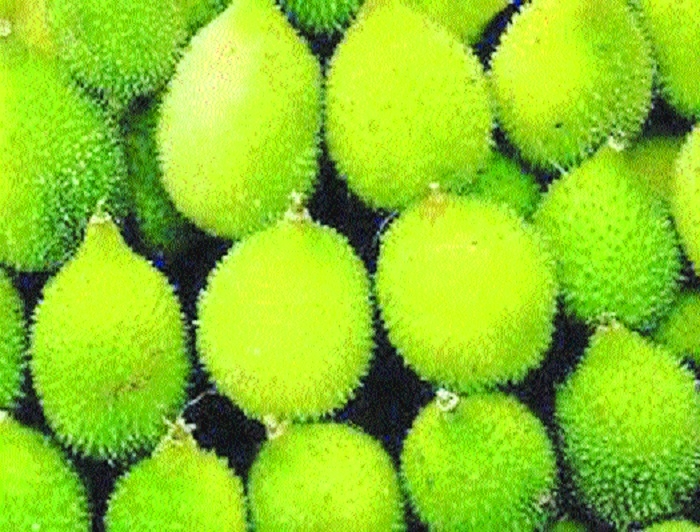Kartole: A natural anti-diabetic'
| Date :23-Sep-2019 |

By Rajendra Diwe :
Kartole or Karutale or Kartoli are the names of wild fruit commonly available in rural and urban parts of India during monsoon season. The fruits are of climbing creeper generally found in different parts of country as well as in South East Asia. Botanically the plant is known as Momordica Diocia and in English it commonly called as spiny guard or spine gourd. Also the fruits are known as balsma pear, prickly carolaho, teasle gourd, kantola etc.
It is used as a vegetable in all regions of India and in some parts of South Asia. There are 12 names of this fruit in Hindi some of these are baeksa, dhar-karela, ghosalphal, golkandra, golkankra, jangli karela etc. In Karnataka this fruit has 16 names some of these are ghatta haagalu, gida haagala, gidda haagala, gidhagalu, kaakontini, kaali kaayi, kaarchi balli etc. In Kerala it is famous as ben-pavel, erima-pavel, erimapasel, vempavalerimapase etc and in Marathi there are six names to this fruits like banzakartholi, banzakartoli, kartholi, kartoli, kertoli, phagulni.
This fruit is identified in Sanskrit by 43 names. Some of them are avandhya, bhaktadamani, bhutapaha, bodhanajali, devi, diva, ishwari, kandashalini, kandavalli, kanta etc. In Tamil, there are 64 names for this fruits like aegarvalli, akacatankucakkoti, akacattankucam, ankitam, cilekakkoti, cilekam etc. In Telugu this fruit has 14 different names. Some of them are aagaakara, agakara, anga kakara, angaakara, karkotaki etc. In Oriya it is called Kankada. In Assamese it is called bhat-kerela, in Manipuri it is called "Karot" and in Bengali kakrol or ghi korola. In Gujarati it is called Kankoda and is cooked the same way Karela is cooked. In Sri Lanka,it is known as ‘Thumba’ or ‘Thumba Karavila’ in Sinhalese. In Chhattisgarhi it is called ‘Kheksi’. In Konkani, it is called Phagil/Phagala and Nepali (or Nepalese), it is called chattel.
This fruit is a source of carbohydrates, proteins, fat, fiber and essential minerals. It also contained small quantities of essential vitamins like ascorbic acid, carotene, thiamin, riboflavin and niacin. It also content protein in the leaves and dry weight of aerial plant parts remained higher in male as compared to female defruited, and monoecious plants. Various parts of Momordica dioica are used as traditional herbal remedies for diabetes mellitus (DM) in India. It is propagated by underground tubers. It has small leaves, small yellow flowers, it has small, dark green, round or oval fruits. It is dioecious, which means that it has distinct male and female individual organisms, hence its name. The pharmacological actions of the fruit include diuretic, laxative, hepatoprotective, antivenomous, antihypertensive, anti-inflammatory, antiasthmatic, antipyretic, antileprosy, antidiabetic, and antidepressant properties but also its leaves have antihelminthic, aphrodisiac, antihemorroidal, hepatoprotective, antibronchitic, antipyretic, antiasthmatic, and analgesic properties.
Fresh fruit juice and cooked fruit in small amount of oil are prescribed for hypertension and diabetes, respectively. Oral administration of 50mL of root juice is advised once a day with empty stomach to beat diabetes. The juice of root is a domestic remedy for the inflammation caused by contact with the urine of the house lizard. The juice of the leaves are mixed with coconut, pepper, red sandalwood, and so forth in order to form an ointment and applied to the head to relieve pain. Dried fruit powder applied into the nostrils produces a powerful errhine effect and provokes a copious discharge from the schneiderian mucous membrane. Root juice has stimulant, astringent, antiseptic, antidiabetic, anti-inflammatory, and antiulcerant effect.